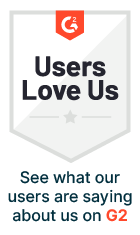
Updated on by Hayley Brown
Software is everywhere, overwhelmingly so in fact. There are applications for everything under the sun and especially any customer pain point that exists. Some intelligent human out there has made the software solution for you. Not only have they made it, they’ve made it possible for you to add to it. Especially, if it is open source, in the realm of cloud environments and technology.
The cloud has come in and swooned everyone. Well, except proprietary software which is now grappling with expanding its product offerings with cloud deployment strategies. However, the door has remained firmly closed in regard to editing the machine code of proprietary software.
Is this what has caused a shift away from proprietary software? We’ll discuss to discover what proprietary software is, its benefits and disadvantages, and the rise of cloud tech.
What is proprietary software?
Firstly let me establish what proprietary software is and that means consulting the software dictionary that is Gartner. They determine that proprietary software is owned by an organisation (Mircosoft, Apple, etc.) as opposed to “public-domain software” (Mozilla Firefox, Blender, etc.) which is freely distributed.
For example, Microsoft Office and Windows, Adobe Creative Suite, Zoom and so on. These are popular examples of closed-source software owned by a single entity and licensed to others who cannot access the source code.
Benefits of Proprietary Software
There are numerous benefits to using proprietary software, those include:
- Application design: proprietary software tends to be well designed and well tested as there are many users relying on the solution every day it will therefore undergo rigorous testing.
- Developer support: depending on the organisation users should receive developer support with the proprietary software. This can be around the clock but this depends on the proprietary software size. If your time zones don’t aline this can be an issue.
- Onboarding: typically proprietary software comes with customer onboarding demonstrating how users can first use the platform and how they can get the most value from it. As well as provide online tutorials and community areas for users to ask and answer questions.
- Security and bugs: the software should be bug-free and if they still exist patches will be deployed to fix these. As well as plug any security holes or vulnerabilities discovered. These can be missed due to the limited amount of eyes on the code. Unlike open-source software which also uses patches to address security holes and threats but they are often spotted quicker due to the numerous number of eyes on the source code.
Disadvantages of Proprietary Software
Can’t have the good without the bad and there are a number of disadvantages to using proprietary software:
- Cost aka licensing fee: this can be a substantial amount of money each month, especially when open-source platforms in comparison are generally cheaper and in some instances incur no costs at all.
- Development support: customers are reliant on the application’s development team for all updates, support and fixes. Depending on the size of that team these amendments may be slow or if the development team dispands work can be discontinued. In comparison open-source software has multiple teams working on the code as well as those who can pick up discontinued projects and expand upon them for customers.
- Infrastructure limitations: proprietary software can be limited to a single computer or network. This means the software cannot be redistributed to another colleague for instance, unlike open source software.
- Customisation: With proprietary software often what you see is what you get. Users have no access to the source code to add any specific customisation to reflect their needs. In contrast, open-source software is much more customisable and tailorable to customer needs.
Proprietary Software and Changing Business Needs
In recent years and especially after the pandemic IT leaders are swapping from proprietary/legacy software to open-source solutions to meet challenges and develop their products and infrastructure.
According to the State of Enterprise Open Source Report, 82% of IT leaders are more likely to select a vendor who contributes to the open source community. There are many contributing factors as to why this is and one prominent one is the fact that proprietary software is based on proprietary protocols or standards can create obstacles to application development and usage.
This reason is reinforced by OpenLogic’s 2022 State of Open Source Report, where they list numerous other reasons why IT leaders were swapping.
They include:
- Access to innovations and the latest technologies
- No license cost, overall cost reduction
- To modernise their technology stack
- Functionality available to improve development velocity
- Many options for similar technologies
- Constant releases and patches
- Less vendor lock-in
- Help to shift to cloud-native/containerised environments
- Makes it easier to hire fewer engineers
Therefore, how is proprietary software expanding and evolving to develop with open source and cloud technology? One way I’ve noticed this is from Mircosoft Office and Adobe Creative Cloud. They both now come with the ability to save work to a shared cloud that can be accessed by team members anywhere. However, they’ll need to have an additional license and access to the same software. As well as the software lacking the ability to be customisable and tailored to each specific user’s needs.
But that being said, proprietary software is the backbone of many organisations’ tech stacks, which is why they are slowly introducing hybrid approaches to the technology they use.
We host a range of webinars discussing embedded iPaaS, integration building and more.
Check out the full list on our dedicated page.
The Rise of Cloud Tech and Open-Source Software
The usage of open-source software is increasing and is predicted to further increase in years to come. For instance, Open Core Ventures predicts a 5% increase in Enterprise open source usage as well as a 3% increase in community-based open source usage in the next two years.
Open-source software will become increasingly critical to nearly all organisations regardless of industry. This is because open-source and cloud technologies can make innovation and agility possible. As well as improve an organisation’s nimbleness for the present and the future. One of the major value points of open-source software is its ability to work with new infrastructure instead of leaving legacy systems and tools behind.
No longer require access to installed software directly on a desktop/laptop, the cloud has enabled access to hundreds of applications. Users now only need to log in to the cloud-hosted application and access all the software features.
According to the CEO of Open Weaver, “Cloud equals open source, legacy equals proprietary.”
Both software types have their pros and cons this is why many organisations are taking a hybrid approach. This way organisations are not limiting their choice to one or the other. Instead, they get to mix and match to what best suits their needs and take the best from both.



